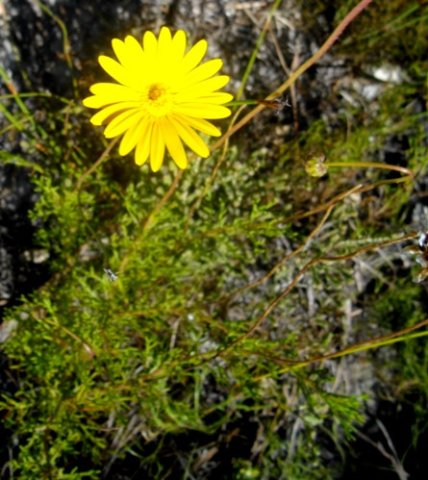Ursinia nudicaulis

Author: Ivan Lätti
Photographer: Thabo Maphisa
Ursinia nudicaulis is a tufted shrublet that reaches 50 cm in height. It is perennial, though usually short-lived with a woody lower stem. The leaves are finely divided, becoming up to 7 cm long and 1 cm wide.
The flowerheads are borne solitary on long scapes, well above the leaves and are about 4 cm in diameter. The flowerhead consists of a dense row of yellow ray florets around a yellow disc. The rays are narrowly elliptic with rounded tips and longitudinal undulations along their surfaces. The lower surfaces of the rays are darker coloured. The upper row of involucral bracts is papery, differing from the green ones lower down. The blooming season lasts from spring to autumn, flowers being usually abundant in the first season after a fire.
The plant occurs widespread in the Western Cape, also to some extent in the Eastern Cape, from the Cederberg to Humansdorp on mountain slopes and lower ground, often associated with moisture. The species is not considered to be threatened in its habitat early in the twenty first century (Vlok and Schutte-Vlok, 2010; Manning, 2007; www.redlist.sanbi.org).

